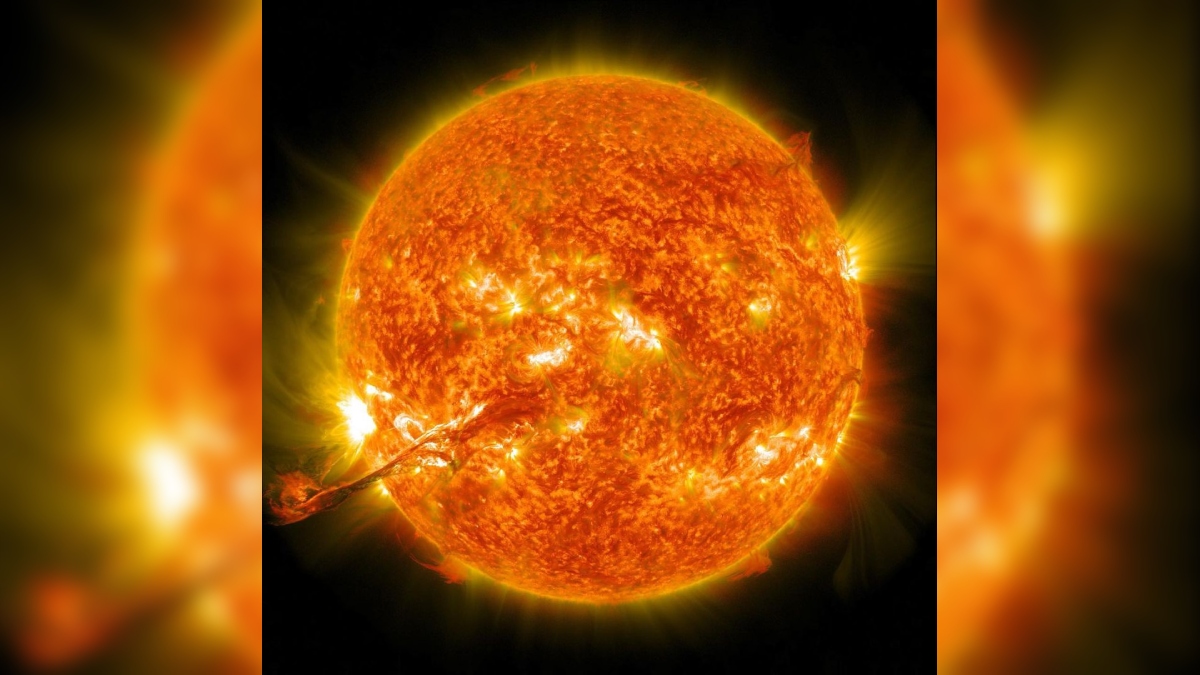NASA has unveiled an awe-inspiring image of the sun taken during a solar flare, offering viewers a rare glimpse into the powerful phenomena that occur in our solar system’s central star.
The photograph showcases the sun radiating bright orange and yellow hues, highlighting “swirling solar activities” and a vibrant burst of red emanating from its lower left part.
The agency shared the image on Instagram with the poetic caption: “Sunny, thank you for the sunshine bouquet.”
Captured by the near-Earth Solar Dynamics Observatory in September 2012, the picture depicts a coronal mass ejection (CME) traversing space at speeds of 900 miles per second (1,448 kilometers per second). This spectacular event later resulted in a beautiful aurora, a natural light display predominantly seen in the polar regions.
In the detailed post, NASA described the sun as the “largest object in our solar system” which orchestrates the orbit of both large and small entities through its enormous size and magnetic force. The space agency took the opportunity to delve into the energetic atmosphere of the sun, the corona, where significant explosions such as solar flares and CMEs take place.
Shedding light on the nuances between solar flares and CMEs, NASA delineated solar flares as powerful blasts on the sun’s surface where energy from twisted magnetic fields is suddenly unleashed, leading to radiation bursts across the electromagnetic spectrum. This discharge heats material to many millions of degrees within minutes, emitting radio waves, X-rays, and gamma rays.
In contrast, CMEs involve “huge bubbles of gas threaded with magnetic field lines” that are catapulted from the sun over several hours. While they may accompany solar flares, they stand as distinct events. The European Space Agency (ESA) further added that when a CME strikes Earth, it can instigate geomagnetic storms, potentially disrupting communication satellites and causing power outages.






